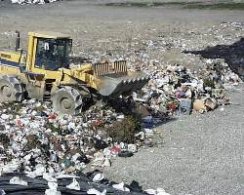Types of Environmental Issues
To intertwine scientific knowledge and practices and to empower students to learn through exploration, it is essential for scientific inquiry to be embedded in science education. While there are many types of inquiry-based models, one model that I've grown to appreciate and use is called the FERA Learning Cycle, developed by the National Science Resources Center (NSRC):
1. Focus
I absolutely love how the Center for Inquiry Science at the Institute for Systems Biology explains that this is "not a locked-step method" but "rather a cyclical process, " meaning that some lessons may start off at the focus phase while others may begin at the explore phase.
Finally, an amazing article found at Edudemic.com, very clearly outlines how inquiry based learning "paves the way for effective learning in science" and supports College and Career Readiness, particularly in the area of STEM career choices.
Unit Explanation
In this unit, students will first develop an understanding of the biotic and abiotic factors within ecosystems, the characteristics and classification of living organisms, and how plants and animals obtain and use energy to fulfill their needs.
Then, students will delve deeper into the NGSS standards by examining the interdependent relationships within an ecosystem by studying movement of matter between producers, consumers, and decomposers by creating models of food chains and food webs.
At the end of this unit, students will study ways that individual communities can use science ideas to protect the Earth's resources and environment.
Summary of Lesson
Today, students will begin creating a Big Book titled, "How Humans can Protect the Environment." I will open the lesson by introducing students to the environmental issue of overfishing. Students will use videos and online resources to further explore overfishing by researching the problem, causes, impacts, and steps humans can take to help protect the environment.
Next Generation Science Standards
This lesson will support the following NGSS Standard(s):
5-ESS3-1. Obtain and combine information about ways individual communities use science ideas to protect the Earth’s resources and environment.
5-PS3-1. Use models to describe that energy in animals’ food (used for body repair, growth, motion, and to maintain body warmth) was once energy from the sun.
5-LS1-1. Support an argument that plants get the materials they need for growth chiefly from air and water.
5-LS2-1. Develop a model to describe the movement of matter among plants, animals, decomposers, and the environment.
Scientific & Engineering Practices
Science & Engineering Practice 7:
Students construct arguments about environmental issues based upon their research findings. Students will also provide and receive critiques form peers within student discussion groups.











